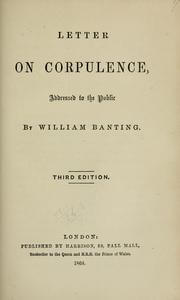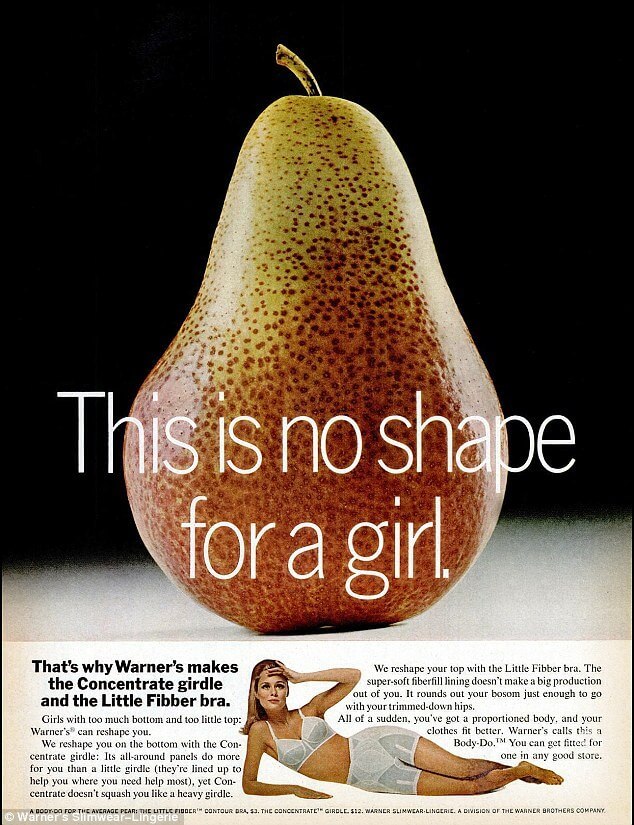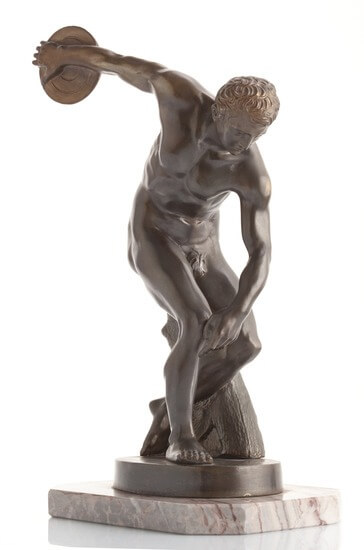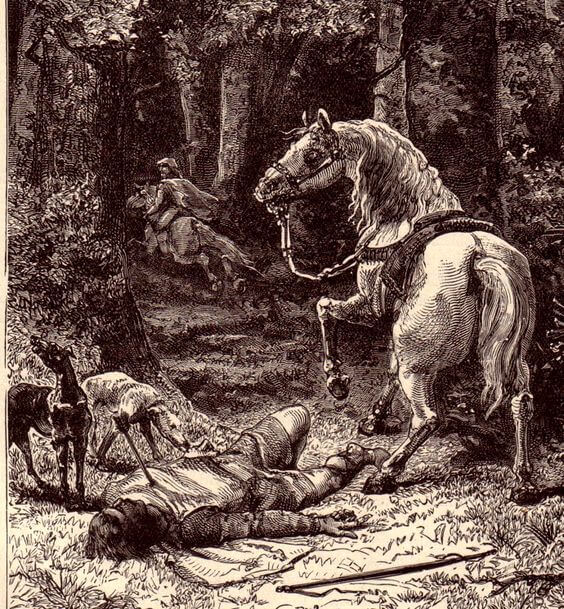The History of Dieting
Americans spend over $61 billion a year on diet products. Why do they spend so much money on diet pills, diet books, diet sodas, meal replacement products, diet foods, and fads designed to help them lose weight yet continue to struggle? Fitness and health have often taken a back seat to an all-consuming need to look a certain way or weigh a certain amount. The truth is that 78% of us Americans are either overweight or obese, and those percentages keep increasing even though we jump from one new diet fad to another. In fact, the average woman tries 61 diets by the time she is 45 years old, according to the UK Daily Mail.
We know that being overweight causes people to feel guilt, shame, and self-hate, and we know that various companies use those emotions to sell us products. As author Louise Foxcroft wrote, "It is always the same old line -- we could be thinner, younger and more loved if only we buy whatever new improved diet food or regime they're selling."
We also know that 97% of those who manage to lose weight gain it back within three years, when they'll be back on board to buy the next diet gimmick. Overweight has often been seen as a moral issue and much of the science around obesity is muddied by misconceptions about why people struggle with weight and the politics of "big food."
Even though they are now in the majority, overweight people are made to feel inferior and unattractive, and face discrimination in the job market. According to the Rudd Center, hiring bias against obese people is worse than that based on race, sexual orientation and physical disability. Young girls told researchers in 1997 that they are more afraid of being fat than they are of losing their parents, having cancer or going through a nuclear war.
When did the madness start? Why is the obesity problem getting worse when there are tens of thousands of diets and products? And more importantly, how will it end?
Keep reading about the often sorry history of dieting in Western Civilization to see if you can separate the fads and scams from the practical and scientific. Be sure to check out our infographic timeline too.
Dieting Among the Ancients
Do you wonder if the first cavewoman asked the first caveman, "Does this loincloth make my butt look big?" Unfortunately, cave people did not know how to write so we don't have a record of whether or not they dieted, but most likely they ate when they had food because that was what it took to survive.
The early Greeks and Romans, however, did let us know how they felt about the issue. If you had a healthy body, the Greeks believed it meant you also had a healthy mind. your body was as healthy and beautiful as a Greek god, that meant your mind was healthy too. Being fat was not only ugly, it was also a sign of mental unbalance.
The Greeks were into fitness in a big way; in fact, wealthy people with leisure time would spend eight hours a day working out in a gymnasium, usually naked. They also held beauty contests for women.
Hippocrates, a Greek physician who lived around 400 BC, believed fat people suffered from unhealthy sleep, aches, pains, flatulence, and constipation, and recommended that they follow a strict diet, increase their exercise, and vomit.
The ancient Greeks admired ideal bodies but luckily, their ideal was chunkier and more muscular than today's tiny skinny ideal. In fact, Venus de Milo would be a hefty 5 foot seven inches, 171 pounds with measurements of 35 inch bust, 30 inch waist and 40 inch hips.
Anorexia Mirabilis: Achieving Holiness by Not Eating
In the first few centuries after Christ, many Christians believed that the physical body was the enemy of the soul. St. Anthony, St. Augustine, the early Desert Fathers, St. Jerome and St. Basil all struggled with food issues, sometimes starving themselves to be more holy. Their hallucinations and other bizarre mental states may have been a result of "anorexia mirabilis," in slang terms, "holy anorexia."
Around 600 AD Pope Gregory defined gluttony not just as eating too much, but also as eating wildly or eagerly or eating between meals. He said that "picky" eaters and gourmands were also guilty of this deadly sin.
St. Catherine of Sienna took it to an extreme. When her parents wanted her to marry her sister's widower, she found out that she could refuse food to get her own way. She began to eat only Communion wafers, although she would lick the pus from the sores of the poor. She got so sick that she could not even swallow water. On February 26, 1380, her legs stopped functioning, and she died of starvation on April 26.
The idea being fat is a sign of not being spiritual persists today when fitness gurus couch everything in quasi-religious terms.
William the Conqueror's Liquid Fast
The world's first liquid diet appeared around 1066 A.D. William the Conquerer grew so fat that he had problems mounting his horse. When he fell off and landed head first, he had to pretend he was kissing the ground in joy. He gave up food and went on a drinking man's diet -- all he consumed was alcohol.
When he finally mounted his horse again, the saddle horn caught in his gut, and he died of infection. The diet was not that successful in that he was too big to fit into his coffin, and when priests stuffed him into it, his intestines burst.
The World's First Diet Book
The Renaissance began around 1500, and attitudes in the Western World became more secular, sexier, and looser. Nevertheless, it was still considered immoral to be overweight, especially because most people did not have enough to eat. The round Henry VIII was the butt of many jokes. In 1550 John Halle advised people to eat simply because, "More die of gluttony than the sword or the plague."
When Renaissance women wanted to look slim, they didn't diet but pulled in their corsets instead. These undergarments bound their breasts as well as their waists. Women actually died from "straight lacing" in that their corsets cut into their skin, causing sores that would get infected.
While today's women are now wearing elastic "shape-wear" or skinny jeans to look thinner, corsets are making a comeback. Kim Kardashian and other celebrities are bringing back "waist training corsets" to achieve a tiny waist.
The first actual diet book came out in 1558 and is still in print. Luigi Cornaro was an extremely overweight Italian who had an ephiphany when he was around 40 years old. Tired of being overweight, feeling out of control, and unable to have sex, he limited himself to 12 ounces of food a day and 14 ounces of wine. His book, "The Art of Living Long," advises others to do the same. Cornaro lived to be almost a hundred years old, and toward the end of his life, he only ate egg yolks.
In 1614 Giacomo Castelvetro published "The Fruits, Herbs and Vegetables of Italy," also still in print. Castelvetro criticized the English for eating too much meat and sugar, and promoted the Italian way of eating fresh vegetables. His book was a forerunner to today's popular "Mediterranean Diet."
In 1660 famine swept Europe, and people ate hunger-suppressing foods like potatoes. Starving cartoonists made fun of the very fat George IV, calling him the "Prince of Whales."
We know of several famous people from the 1700s who struggled with their weight.
Dr. Samuel Johnson, the leading intellectual of his day, grew very fat and depressed, and named his obesity "my black dog." His constant companion and biographer, James Boswell, argued that some "lean people can eat a great deal and remain thin, while others eat less and grow fat," but Dr. Johnson wasn't having it, noting that his fat was strictly a result of his eating too much.
The poet Samuel Coleridge was described as fat and flabby, and for years he searched for cures for "bloat and constipation."
The second real diet book was "The Natural Method of Cureing the Diseases of the Body," by Dr. George Cheyne in 1730. Dr. Cheyne was grossly fat. He went on a diet of milk and vegetables but the moment he went back to regular foods, he regained it. He became a lifelong vegetarian, and wrote that "the nervous diseases of man come from confined animals. I cannot find difference between feeding on human flesh or animal flesh,” an attitude that still exists today among certain vegetarians.
In the early 1700s, Thomas Short wrote "The Causes and Effects of Corpulence," in which he put forth the theory that living near swamps makes you fat, so the way to slimness is to move to a desert.
The 19th Century and the Beginnings of Modern Dieting
In the mid-1800s, the ideal of both masculine and feminine beauty was thin and romantic. The bad news for overweight people was clothing became form-fitting for both sexes. Women's dresses required a tiny laced-in waist from 1850 to 1920. Men wore tights or breeches with tight-fitting jackets until around the end of the 19th century when looser trousers or pants came in style. Form-fitting clothing and a slim figure as ideal meant fat people were again fair game to be ridiculed and called immoral. One book from 1881 even advised governments to arrest and imprison fat people.
First Celebrity Dieter
Lord Byron was easily the world's sexiest man in the 1820s. Everyone wanted to look like him, even he wanted to look like him. His problem was he gained weight easily and had to work hard to remain slim. This rock star of the Regency era would starve himself and then binge eat, and then he would try to sweat it off under layers of clothing. He invented the vinegar diet, drinking it with water several times a day to flush off his fat. He also ate potatoes drenched in vinegar. There are records of women dying from drinking pints of vinegar in imitation of their hero, Lord Byron.
Today a variation of Lord Byron's diet, the Apple Cider Vinegar Diet, is still around. You drink one tablespoon of apple cider vinegar in water before every meal.
Between about 1850 and 1900, "Victorian Anorexia" was a form of self-imposed starvation that women practiced in order to look thin and frail.
The ideal woman of the time was Elisabeth Amelie Wittelsbach, Empress of Austria, known as Sisi. She was five foot eight but weighed 110 pounds. Known for her 16 inch waist, she worked all day to keep it. She took long hikes, went horseback riding and did gymnastics, all the time eating very little and using laxatives and emetics to keep her weight down. If she gained a pound, she would start fasting. Even with the help of maids and hair-dressers, it would still take Sisi three hours a day to get dressed, with an hour just to lace her into her leather corset. Sisi was moody and withdrawn, probably from starving herself.
In an atmosphere where thin equals beautiful and spiritual, overweight people again found themselves under attack. Between 1850 and 1880 people would go to the London Museum to make fun of two tons of gross fat on display there.
The 19th Century brought us the first low carb diet book, the first diet diary, and the first scientific research on metabolism.
First Low-Carb Diet
In 1825 Billat-Savarin wrote "The Physiology of Taste or Meditations on Transcendental Gastronomy," and argued that "fat is not a disease but a lamentable result of an inclination to which we give way." Fat people must give up bread and flour-based foods, root vegetables like potatoes, sugar and starches, and eat only fruits, vegetables and lean meats. This was the forerunner of Atkins, South Beach, Paleo, Caveman and other modern low-carb regimes.
First Diet Retreats
In 1830 Sylvester Graham, inventor of the graham cracker, wrote that fat is bad for your health, and makes you corrupt morally and sexually promiscuous. He advised parents to teach temperate eating as a matter of morals. Graham lead health retreats, preaching vegetarianism and the avoidance of tea, coffee, tobacco and alcohol.
First Diet Diary
In 1856 Dr. A.W. Moore, who himself had to battle overweight, published a diet guide that included a section where readers recorded what they ate at each meal along with their weights.
First Diet with Mass Appeal
 In 1860 an English undertaker by the name of William Banting weighed 202 pounds on a five foot five inch frame. Like most dieters, he tried everything to lose weight, including eating lighter foods, swimming, spas, and laxatives.
In 1860 an English undertaker by the name of William Banting weighed 202 pounds on a five foot five inch frame. Like most dieters, he tried everything to lose weight, including eating lighter foods, swimming, spas, and laxatives.

Desperate measures.
He finally lost 50 pounds on a diet he invented himself, and went on to publish it in a pamphlet called "Letter on Corpulence." The pamphlet sold thousands of copies all over the world, and so many people were on it that the term "I am banting" meant "I am on a diet."
Banting's diet had lots of calories --over 2800-- compared to modern regimes less than 1200 a day, and emphasized protein, fat and roughage. He advised five ounces of meat at breakfast with a small biscuit or dry toast; five ounces of fish with vegetables, one ounce dry toast and unsweetened fruit for lunch, and four ounces meat, three ounces fruit and one small glass of wine at dinner. You had to avoid root vegetables like potatoes, butter, salmon, pork, milk, sugar, starches and beer.
By the late 1880s, many more diet books were published, including "On Corpulence" by Dr. Watson Bradshaw, the first one to include a questionaire for readers about their eating habits. People were also buying "diet powders," often with useless ingredients like lard in them or even dangerous ones like strychnine.
Along with powders, people bought corsets, creams, laxatives,pills, synthetic hormones and thyroid extracts, and even took massages to "ooze" fat from the skin. In 1833 Dr. Gustav Zander invented a belt-driven fat massager that wrapped around the body to jiggle fat away even as it cured gout, arthritis, nervous exhaustion, ladies' ailments, and made life worth living again.
Dieting was here to stay, and no one with pudge would ever be safe again from diet doctors, diet foods, and diet cures.
Chew Chew Chew Your Fat Away

You'd look this tired and miserable too if you chewed every mouthful 100 times.
One of the weirdest diet fads in the whole history of dieting was Fletcherism, a craze in the United States and England around 1905 through the mid-1930s. Many famous and intelligent people were "Fletchers," including John D. Rockefeller, Franz Kafta, John Kellogg (cereals), and Henry James.
The year was 1903, right around the time big insurance companies began rating policy holders based on their weights. Horace Fletcher, an art dealer in San Francisco, was too fat to quality for insurance, so he invented his own weight loss plan. He lost 40 pounds by chewing every mouthful 32 times or once for each tooth, and then spitting out the rest. Later he refined the Fletcher method to "chewing until the food is completely liquid or at least 100 times." He took pride in the fact that he only pooped twice a month, and his was "no more offensive than wet clay and had no more odor than a hot biscuit."
"Munching parties" came into fashion when people stood around and counted their jaw movements until they got to a hundred, which sometimes took as long as five minutes.
In 2011 Scientific American published a study done in China that proved people eat 12% less if they chew their food more intently, so perhaps Fletcher was on to something.
First Calorie Counting Book
Dr. Lulu Hunt Peters, who once weighed 220 pounds herself, was probably the first person to count calories and to advise others to do the same. Her 1918 book, "Dieting and Health: With Key to the Calories," sold over two million copies in 55 editions. Declaring that "being fat is sinful, and self-control is the key to slimness," Dr. Peters suggested a diet of 1200 calories a day for women to be eaten in 100-calorie units. To find your ideal weight, she advised taking the number of inches you are above five feet in height, and multiplying it by 5.5.
A few years later Wilbur Olin Atwater was the first person to calculate metabolic rates and the amount of calories burned in various activities. He produced a "calorimeter."
CONTINUE READING THE HISTORY OF DIETS (Part II: World War I to Modern Times)



